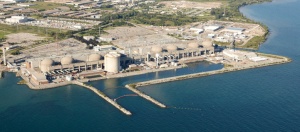Having missed OPG’s press release on their 2nd Quarter financial results a few days ago, a post on Scott Luft’s twitter account stating: “OPG released Q2 results. Net income during the first half of 2020 is $775 million – which is greater than their full year net income in all but one year from 1999-2015” alerted me!
What the above suggests is OPG will finish the year with record profits despite most of Ontario’s industrial companies being negatively affected by the Covid-19 lock-down. It seems ironic one of the province’s wholly owned companies will achieve record results with the economy brutalized and electricity consumption falling. For the first six months of 2019 Class A and B consumption was 68.7 TWh and for 2020 it fell to 65.5 TWh for a drop of 3.2 TWh or 4,7%.
OPG’s revenue in the first six months was up from $2,992 million in 2019 to $3,569 million or $577 million (+19.3%). In 2019 OPG generated 39.3 TWh versus 41.6 TWh in 2020. OPG provided 63.5% of all ratepayer consumption in 2020 versus 57.2% in 2019. It seems incongruous the increased generation of 2.3 TWh produced additional revenue of $548 million (net of fuel expenses).
On closer examination of the foregoing the commentary in the report states OPG spilled 1.9 TWh of hydro in 2019 whereas in 2020 it was 2.5 TWh due to SBG (surplus baseload generation) so that would have added some revenue. The additional spilled hydro payments however would only account for about $30 million of the $548 million increase so why did gross revenue climb by so much?
As it turns out most of the huge jump in revenue came about because of a rate approval from the OEB in 2018 related to OPG’s nuclear plants. The OEB had, for some reason, been sitting on the rate application for a considerable period. While OPG generated an additional 1.6 TWh from nuclear plants it accounted for about $150 million in additional revenue. The rate increase for the balance of the nuclear generation added approximately $260 million and the rest of the increase in revenue came from gas generation facilities (some recently acquired by OPG) and the balance from their US hydroelectric owned facilities purchased in October 2019.
The average cost per MWh of nuclear power generated by OPG in the first six months of 2019 was 81.80/MWh and jumped to 94.20/MWh in 2020 for an increase of 15.1%.
The upsetting part about the results is OPG has, so far in 2020, produced a ROE (return on equity) of 9.2% during the pandemic lock-down on the $775 million of after tax* ($199 million) net profit! Most private sector businesses are losing money meaning their return on equity is negative and has/will result in many of them declaring bankruptcy or being forced to lay off employees. Those they lay off will continue to have to pay their electricity bills which are among the highest in Canada and the US.
OPG’s favourable ROE does nothing to alleviate the expensive electricity bills which businesses (small and medium) and residential ratepayers must pay. The Provincial government should use the $199 million of tax revenue from OPG to reduce ratepayer costs and instruct the OEB to consider lowering the allowed ROE to prevent further increases on our extremely high electricity bills.
The Provincial Government should also move to subvert those high cost wind and solar contracts handed out by the McGuinty/Wynne government that are a continuing burden on all ratepayers.
*While OPG allocates tax costs they are actually referenced as PIL (payments in lieu) of actual taxes and are simply recorded as revenue within the Provincial budget.



 The
The 